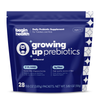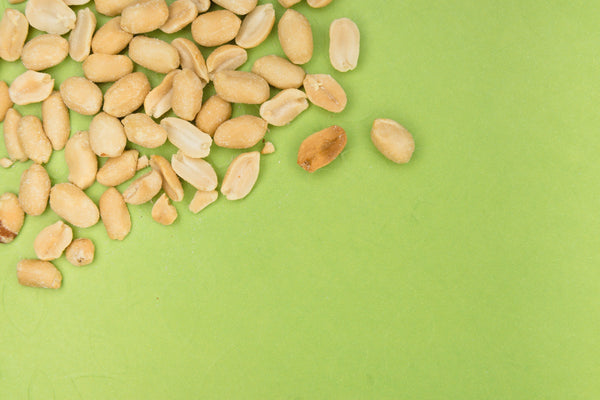Holistic Solutions for Candida Overgrowth in Kids
share this article

Candida overgrowth in kids is a growing concern for parents. As a specialist in pediatric gut health, I’ved worked with a variety of families to address the root causes of gut issues stemming from candida overgrowth.
Let’s explore what candida overgrowth is and how it can impact a kid’s overall health and review some holistic recommendations that may help support digestive symptoms that stem from this condition.
What is Candida Overgrowth in Kids?
Candida is a type of yeast that is normally present in the human body and digestive tract. However when its growth gets out of control, it can lead to Candida overgrowth and result in Candidiasis, which is a fungal infection caused by the Candida yeast. This imbalance can occur in kids for several reasons, including:
-
Antibiotic Use. Use of antibiotics is by far the most common cause of erosion of normal beneficial flora leading to yeast overgrowth. Research shows that antibiotic use in kids can disrupt the delicate balance of gut bacteria, allowing Candida to thrive [1]. Some of the most common antibiotics prescribed to kids are:
-
Amoxicilin
-
Augmentin
-
Cephalexin
-
Azithromycin
-
Cefdinir
-
Dietary Factors. Diets high in sugar and processed foods can fuel Candida growth. Cereals with added sugars and processed foods promote imbalances in the beneficial bacteria that keep Candida at bay. Keeping a symbiotic relationship with all microflora is the key to a healthy microbiome. Diet is also crucial for strengthening the immature immune system, making it easier for your little one to fight off illness both inside and outside of the body.
-
Weakened Immune System. Little ones with weakened immune systems and those with chronic infections are more susceptible to Candida overgrowth, primarily due to repeated antibiotic use.
Candida Symptoms in Kids
Common signs and symptoms I look for in kids with Candida include:
-
Chronic Constipation. Candida can disrupt the normal digestive process, leading to chronic constipation in kids.
-
Digestive Issues. Kids with Candida overgrowth may experience bloating, gas, and diarrhea.
-
Oral Thrush. This is a common sign of Candida overgrowth in infants and toddlers.
-
Skin Rashes. Persistent skin rashes, particularly in diaper areas, armpit, and neck, can be linked to Candida.
-
Other symptoms can also include vaginal itching and pain during urination.
Daily reads to help your little ones lead happier and healthier lives.
Join the
Happy Gut Club
Candida Testing in Kids
Identifying Candida overgrowth in kids can be challenging, as symptoms often overlap with other conditions such as SIBO. Here are some of the pros and cons of two types of testing that we use to determine a Candida diagnosis:
-
Candida Antibodies Serum Testing. These tests are only accurate when Candida has become present in the bloodstream. Candida yeast often “hides” behind cell walls in the body [5], so additional testing such as stool testing may be unreliable to determine final diagnosis.
-
A Hair Tissue Mineral Analysis. This is our go-to recommendation, which shows key mineral deficiencies that are common to fungal overgrowth. The best and most effective way I have found to test for Candida overgrowth is with an in-depth health history of both the Mom and their kiddo using this test.
Candida Overgrowth: Holistic Treatments for Kids
When addressing Candida overgrowth in kids, a holistic approach that tackles the root cause can often yield effective results. Each approach will vary but they may include several modifications involving the following:
-
Dietary Modifications. I always consider and implement dietary changes first. Very often, just tweaking the diet can make a huge impact in how the microbiome and immune system respond to Candida. A diet high in sugar and processed foods such as candy, chips, and crackers can fuel Candida growth. Instead, we work adding whole, nutrient-rich foods to support a balanced gut environment.
-
Stress Management. Next, I help parents identify stressors that may put a kiddo at greater risk and help them implement a stress management and lifestyle strategy. Lifestyle changes that help these reduce stress include:
-
Breathwork
-
Magnesium baths
-
Extra naps throughout the day
-
Reducing TV or electronics use and replacing with outdoor activities
Kids’ stress shapes their emotional lives as adults, physical health, and longevity. Stress has the potential to change your little one’s brain chemistry, anatomy, gene expression and even the microbiome.
-
Probiotic Support. Since we are working with dysbiosis, adding different types and strains of probiotics can very often make a huge shift in reducing the yeast population in the gut. I will often opt for this strategy over an herbal antibiotic protocol since even herbs can harm the microbiome to some degree (see below). Specifically, studies have found that L. paracasei 28.4, L. rhamnosus 5.2 and L. fermentum 20.4 isolates showed the greatest antifungal activity, helping to prevent the formation of Candida biofilms [2].
-
Herbal Antibiotics. Examples of herbal remedies with proven antifungal properties include oregano oil, garlic, and grapefruit seed extract. Research shows that these herbs can inhibit the germination and biofilm formation of Candida [4]. Since our little one’s immune systems are more delicate, I recommend extreme caution when using these powerful herbs. Not all herbs are appropriate for toddlers and kids, so always seek the advice of a qualified health or naturopathic practitioner before incorporating this strategy.
Summary
Candida is a yeast in the body that naturally occurs, but overgrowth due to diet and stress can lead to a fungal infection called Candidiasis. Antibiotic use, poor diets, and stress can also contribute to candida overgrowth. A Hair, Tissue, Mineral Analysis can help practitioners confirm a Candidiasis diagnosis before treating through diet and lifestyle modifications. Probiotics and prebiotics can also help rebuild a stronger foundation for the gut microbiome to promote digestive balance and overall gut health.


















